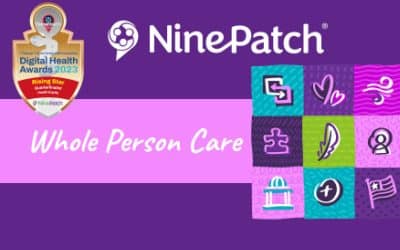Community Reentry SDOH Programs
Home » Blog » Mental Health »

Coordinated community reentry SDOH programs are critical to support persons leaving city, county, state, or federal jails and returning to society. Being admitted into and released from the criminal justice system can be a traumatic life experience.
After being released, it can be hard to adjust to life without a home, a job, healthcare or a support system. The pressure to return to old habits can be overwhelming.
While you might see or hear stories about crime on the news, statistics about the background of incarcerated individuals are not well publicized. The circumstances leading to imprisonment are shocking and the efforts necessary to support reentry are formidable.
According to the Prison Policy Initiative Report, federal, state, local, and tribal systems hold almost 2 million people in prisons, jails, juvenile correctional facilities, immigration detention facilities, Indian country jails, as well as in military prisons, civil commitment centers, state psychiatric hospitals, and prisons in the U.S. territories.
Social and Economic Circumstances Contribute to Incarceration
Challenging circumstances and poor socioeconomic conditions beginning early in life can contribute to ongoing involvement with the criminal justice system. Safe neighborhoods, educational opportunities, stable home and family environments affect early childhood and youth development.
Youth who are imprisoned are often exposed to adverse childhood experiences (ACEs), such as sexual or physical abuse. Furthermore, they are often involved in child welfare systems. The stress and trauma of being involved in the criminal justice system results in multiple and complex health problems.
Models for Reentry offers a list of circumstances experienced by incarcerated individuals:
- 68% meet the criteria for substance abuse or dependence
- 60% lack a high school education or equivalent
- 55% of women have histories of physical and sexual abuse
- 46% have a family member who was incarcerated
- 43% of state and 23% of federal prisoners had a history of mental health problems
- 1/3 report a parent who abused alcohol or drugs
- 30% were unemployed during the month before arrest
- 14% were living in a homeless shelter or on the street before incarceration
The Centers for Medicare and Medicaid (CMS) confirm that individuals who are incarcerated have higher rates of mental illness, chronic disease and physical disabilities. Hypertension, asthma, tuberculosis (TB), Human Immunodeficiency Virus (HIV), Hepatitis B and C, arthritis, sexually transmitted diseases, and substance use disorders are more common for this high risk, high need population.
The depth of services available in state carceral systems varies widely. They include different levels of healthcare assessments, care management, preventative care, and acute care.
Because access to healthcare within systems can be limited, bridging care for persons planning to reenter community life is critical. Establishing community reentry sdoh programs and connections with providers pre release reduces the urgency and pressure of identifying services post release.
Person-centered approaches are essential for restoring self-esteem and providing strategies for making more positive life choices according to the National Institute of Justice. They also help persons reentering community life improve decision making, social skills, moral reasoning, self-control, and impulse management skills.
In addition to clinical care coordination, carceral staff must establish relationships with community-based providers to address social circumstances. This requires coordination and support from multiple organizations and services.
Clinical and Community Based Program and Service Coordination
The reasons for incarcerations are varied which mean that support for this population must reach across a variety of programs and services. These services and support include health care, behavioral health, mental health, and social care assistance that spans public and private sectors.
A wide range of specialized services and programs support pre release and ongoing reentry efforts. Individuals reentering community life interact with a variety of agencies and personnel that include many of the following:
- Child welfare and foster homes
- Legal and justice systems including police and emergency medical services (EMS)
- Health care systems including health information exchanges (HIEs), hospitals, health centers, primary and specialty care, laboratory services, and pharmacies
- Substance use and medication assisted treatment (MAT) programs
- Mental health counseling, peer support services, spiritual support
- State government programs including health and human services (HHS), Medicaid, enhanced care management (ECM), health homes
- Medicaid managed care organizations supporting states
- Community based organizations and community information exchanges (CIEs) offering access to employment, stable housing, transportation, nutritious food, clothing and many other services
Reentry Programs Require Coordinated Efforts and Detailed Follow-Up
Introducing a new software application to support county or statewide community reentry SDOH programs can be impractical. This is especially true for organizations with programs and systems already in place that transmit health, criminal justice, Medicaid, pharmacy, behavioral health, substance use treatment and other information.
Data exchange between clinical and social care technology systems can be challenging. This can create a barrier for making agency referrals, scheduling appointments, ordering medications, providing support for housing and transportation and a long list of other program that must be coordinated.
Just as the amount of coordination that occurs post release may feel overwhelming for individuals, the staff at supporting agencies can also feel challenged by the follow up that is necessary.
The NinePatch® suite of SDOH software solutions offers options to support staff and individuals participating in community reentry programs. To close the loop on referrals and communication, RIE technology layers between existing programs and transmits data across networks and applications.
Community-based organizations without access to shared applications for care coordination, closed loop referral, and communication can use NinePatch Whole Person Care. This white labeled SDOH software is configurable to meet the needs of local community initiatives.
Technology Support for Pre-and Post Health Related Care Coordination Needs
Community reentry SDOH programs that focus on health-related social needs often include a variety of assessments to identify clinical and social needs. Additionally, many states are currently in the process of confirming specific assessment tools for Medicaid programs that will address social determinants of health (SDOH) and health related social needs (HRSN).
These assessments can link to ICD 10 z-65.0 codes relating to civil and criminal proceedings, imprisonment, incarceration and release from prison. Medicaid programs in many states link social needs assessments to z-codes to support health data analysis and reimbursements to community-base organizations.
- Z65.0 Conviction in civil and criminal proceedings without imprisonment
- Z 65.1 Imprisonment and other incarceration
- Z 65.2 Problems related to release from prison
- Z 65.3 Problems related to to other legal circumstances
- Z 65.4 Victim of crime and terrorism
- Z65.5 Exposure to disaster, war and other hostilities
- Z 65.8 Other specified problems related to psychosocial circumstances
- Z 65.9 Problem related to unspecified psychosocial circumstances
Additionally, LOINC® Logical Observation Identifiers Names and Codes that relate to laboratory test orders and results for the electronic exchange of clinical health information may be linked to assessment tools.
Documenting Clinical Success For Community Reentry Programs
The CMS reentry and care transition project based on a January 2023 report from HHS ASPE lists the following goals as contributors to program success:
- Increase coverage, continuity of coverage, and appropriate service uptake through assessment of eligibility and availability of coverage for benefits in carceral settings prior to release
- Improve care transitions and continuity of care during release and reentry
- Improve coordination and communication between correctional systems, Medicaid systems, managed care plans, and community-based providers
- Increase additional investments in health care and related services, aimed at improving connections between carceral settings and community services upon release to address physical health, behavioral health, and health-related social needs (HRSN)
- Reduce all-cause deaths in the near-term post-release
- Reduce the number of hospital emergency department visits and inpatient hospitalizations among recently incarcerated
- Support Medicaid beneficiaries with preventive and routine physical and behavioral health care
There are many models for successful reentry programs across the United States. Each community has different needs as do the individuals reentering their local communities.
At NinePatch, our goal is to support organizations participating in reentry and rehabilitation programs and processes so that incarcerated individuals may rejoin their families and communities. We know that efforts to support whole person care and interoperability across all platforms is only one part of this complex solution. We also realize that it takes more than a single technology solution to solve for reentry.
Organizations working across public and private sectors to build successful community programs across a variety of use cases, including community reentry SDOH programs, use NinePatch Community Convener Services to ensure programs are in the “Ready – Set – Go” stage before implementation.
If your local community is involved in reentry efforts or considering a new initiative we’d like to share our software solutions and community convener program information with you.
For more information on how NinePatch brings communities together by supporting interoperability, care coordination, and closed loop referrals systems, across counties and within states, schedule a demo today
Stay Up To Date
NinePatch® Recognized as Quarterfinalist for the Digital Health Hub Foundation: Digital Health Awards
NinePatch is a Rising Star in the Health Equity Track KNOXVILLE,...
SDOH and Care Coordination Programs and Funding
SDOH care coordination and funding is available from federal, state,...
Whole Person Healthcare Model Insights and Opportunities
A whole person healthcare model combines physical, behavioral, and...




